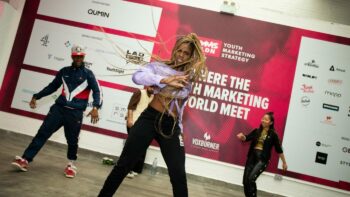
5 Social Media Platforms Gen Z Marketers Need to Be Using
Article Highlights
Be the first to access new posts and exclusive content
Using social media as a brand is a given for any youth marketer, but do you know which platforms are the best for engaging Gen Z right now? Facebook is a thing of the past and Snapchat isn’t far off, but there are still five key players in the game that are a must for your brand.
Interestingly, Voxburner research revealed that females are more likely to use Instagram and TikTok, whilst males are most likely to use TikTok and YouTube – something to bear in mind if your brand specialises in products for a specific gender.
But, without further ado…
5 social media platforms Gen Z marketers need to be using
Voxburner recently reported that an impressive 64% of Gen Z use Twitter, and out of this, 45% use it at least once a week – Twitter is an instant and direct way of engaging with your consumers, and is brilliant for building community and forming a relationship with the general public. Thanks to the limited character count, Twitter makes users be as direct as possible – something which is favoured by a generation who consumes short-form content, such as TikToks and Instagram stories, so frequently. The app is also the number one platform for finding out quickly and easily what the general public is saying about your brand – just search your name (you’ve been warned…)!
Case study: One of our favourite Twitter accounts is innocent drinks, whose entertaining, sarcastic and cheeky tone of voice has earned itself thousands of followers. Innocent’s focus lies with brand identity as opposed to product marketing, and this is something that suits the platform perfectly.
TODAY'S WEATHER FORECAST:
— innocent drinks (@innocent) August 15, 2022
Flip a coin.
If it's heads, it's still the heatwave.
If it's tails, there's a rainstorm coming.
These are your only two options for the rest of August. Dress appropriately.
Instagram posts
Unlike Facebook, Instagram shows no signs of decreasing in popularity amongst Gen Z, with a huge 92% of Gen Zers using the app in 2021 (out of this, 78% look at it every day!). Young people love to focus on the aesthetics of a product, and this visual storytelling app lends itself perfectly to that. Furthermore, assets such as the shopping feature (in which users can use in-app checkout features and tailored product pages) mean that young people can admire an outfit on the app and then instantly buy it. Carefully curated pages and posts are a must with this app in order to thrive.
Case study: One brand that uses Instagram’s visuals to its advantage is Rihanna’s Savage x Fenty brand – not only do they have a diverse range of models and perfectly use influencer marketing and UGC, but every one of their posts ties into their aesthetic and strong brand identity, making the scrolling process a thoroughly enjoyable one.
Instagram stories and reels
Instagram stories and reels are, whilst different to Instagram posts, still very valuable to student marketers. Reels – short videos much like TikToks – allow users to customise its cover photo, meaning that the videos can still fit on a profile and match in with the overall aesthetic. Instagram posts are, in general, considerably more curated than stories and reels.
Meanwhile, stories enable in-app links, geotags, ‘swipe up’ options and shoppable features. Stories are also great for sharing discounts, with 16% of Gen Z admitting that they’ve shared a discount on their Instagram stories. As they only stay live for 24-hours, Instagram stories are perfect for behind-the-scenes content and sneak previews of shoots, new releases or outtakes. Additionally, stories can be added to ‘highlights’ on a profile, which save and categorise them.
Case study: Reality TV show Love Island uses Instagram stories to its advantage, posting reactive content and memes whilst the show is ongoing. The stories are then saved to highlights corresponding to each week, meaning that viewers can go back and view the content in an organised and concise manner.

TikTok
Voxburner research recently revealed that a huge 77% of Gen Z use TikTok – this is a massive demographic that you can’t afford to miss out on! TikTok is widely used by 16-24s for entertainment and learning, but it’s also great for product marketing via hashtags and partnerships with well-known TikTokers. By tapping into trends and audios, using TikTok as a brand can not only give you a face but also lets Gen Z see more fun, playful side to you.
In our opinion, the best brand on TikTok right now is Ryanair. The brand is known for jumping on trends, mocking passengers, rivals and even their own services. And the account isn’t just loved amongst young people in the UK – Gen Zers from the US and Asia are even reaching out to the company and asking them to expand their flight routes to allow these young people to experience their services!
YouTube
An impressive 98% of Gen Zers use YouTube, and 80% use it at least once a week – perhaps these are surprising numbers for a platform that specialises in longer content. However, YouTube is the second-largest search engine in the world and is fantastic for SEO, so this really is a platform you can’t afford to miss out on. Gen Z favours brand YouTube videos which are high in energy and have little to no product content, so save your product reviews and perfect images for TikTok and Instagram and use YouTube for educational, fun content that relates to your brand.
Case study: Vogue are a great example of how to run a YouTube channel, with videos ranging from their bathroom ‘Get Ready With Me’s to their famous ‘73 Questions With…’. If you’re after beauty tips, fashion advice or skincare routines from pop culture’s finest and most trending, Vogue’s YouTube channel is the place to go.
Like what you’ve read? Why not check out our Social Annual at Voxburner+ to read more about the impact social media has on Gen Z and how your brand can keep up with this everchanging landscape. Subscribe to Voxburner+ now and access the latest stats, insights and ideas on how you can drive your youth marketing.



